Embroider-Along Part 4: Placement and Hooping
Welcome to Part 4 of my Embroider-Along. In Part 3 we discussed Needles and Threads, two of my favorite things. Hi, my name is Sue O’Very, BERNINA Ambassador and machine embroidery expert. Today I will teach you about Placement and Hooping.
Placement and Hooping
Today we will discuss the five components to get proper Placement and Hooping:
- Machine Embroidery Hoop
- Templates
- Marking tools
- Adhesives
- Hooping techniques
Machine Embroidery Hoop
In this section there are three important topics to cover:
- Embroidery Hoop Facts
- Embroidery Area vs Hoop Size
- Design size
Embroidery Hoop Facts
Keep in mind with machine embroidery hoops:
- Embroidery hoops have two parts
- Top (smaller Inside hoop)
- Bottom (larger Outside hoop)
- Embroidery hoops are specific to brand and sometimes even unique to machines – ask your local dealer before you buy the wrong hoop
- Both parts of the hoop are marked
- Arrows
- Notches
- Hash marks
- Hoops will have some sort of tightening/loosening device
- Ergonomic Twist-Lock mechanism
- Screws
- Hoops will attach in one of two ways to the machine
- Clamps and locks
- Slide in
Embroidery Area vs Hoop Size
Before stitching a design it is critical to know what the machine size limitations are. A machine will only stitch up-to a certain size. You must know what the “Embroidery Area” is and it corresponds to hoop size.
The Embroidery Area is the largest continuous work space on your machine. The Hoop Size is how large the embroidery area is for that specific hoop. Most machines come with a couple of hoops, allowing you to decide which hoop is best suited for the project, i.e. baby socks with small hoop. The Hoop Size is not the measurement of the plastic frame, rather the embroidery area inside the hoop. For example, my machine is the BERNINA 790 Plus : It’s largest embroidery area is 8.3″ x 15.7″ and it came with three hoops:
- Small – 72 mm x 50 mm (2.83″ x 1.96″)
- Medium – 100 mm x 130 mm (4″ x 5″)
- Large oval – 145 mm x 255 mm (5.8″ x 10.2″)
Notice the embroidery area (8.3″ x 15.7″) is much larger than the largest hoop (5.8″ x 10.2″) listed. In addition to the hoops included with my machine I decided to purchase two additional hoops. There is another hoop that is still on my wish list (the Hoop ‘n’ Buddyz” Hat hoop). The two hoops I decided to buy have allowed me to get more use from my machine and take advantage of that larger embroidery area.:
What about your machine?
- What is your Embroidery Area?
- Which hoops do you have and which would you like to add to your collection?
Jot these measurements down in a notebook or your embroidery journal. These measurements will help in deciding which designs you can stitch on your embroidery machine.
Design size
Now that you know what your Embroidery Area is you can purchase embroidery designs with confidence. Most designers will list the Hoop Size (for example: 4″ x 4″, along with the Embroidery Area measurement “1.6” x 3.9″). The Hoop Size gives the buyer an idea of which hoop is closest to the design size. For example, last week on the Embroider-Along Part 3 I gifted an Enchanted Flamingo embroidery design. The design was listed as 4″ x 4″ and 5″ x 7″ when in reality the designs are much smaller than those sizes:
- 4″ x 4″ actual embroidery area is 1.6″ x 3.9″ (I would use my Medium 4″ x 5″ hoop)
- 5″ x 7″ actual embroidery area is 2.7″ x 6.9″ (I would use my Large oval 5.8″ x 10.2″ hoop)
Which hoops will comfortably fit each design on your machine?
Templates
Now that you have an understanding on Embroidery Area, hoop size and design size let’s discuss templates. There are two templates for machine embroidery:
-
Plastic templates
-
Printable templates
Plastic templates
Most embroidery machines comes with a couple hoops. Most of the hoops will come with clear plastic templates. These templates have notches so they fit into the hoop perfectly with little to no budge room. These plastic templates have grids and lines marking the center of the embroidery area. This will help you know exactly how where the design will stitch.
Printable templates
Unlike the plastic template, which only shows lines and grids, a printable template can show the actual design. Since most of us creative types are visual people, a printed template is a dream come true.
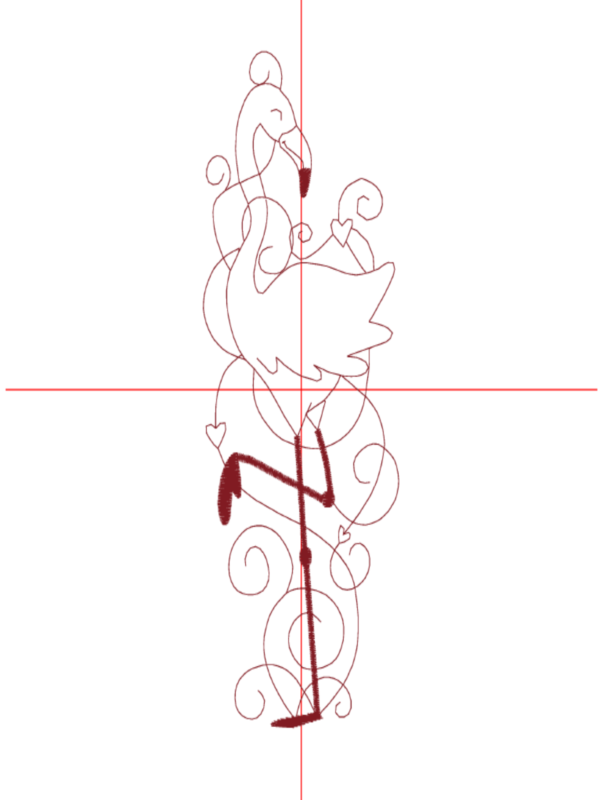
To print a template like the one above in actual size requires software. There are several software options and it could be overwhelming if you are new to machine embroidery. I would suggest to ask your local BERNINA Dealer. They can train and support you, answering any questions. Like many of you seasoned embroiderers I have been using software since the mid 90’s. Like all technology software changes quickly! My recent favorite is BERNINA Toolbox. It is very user friendly and you can download a free trial. Be warned, you will fall in love with it.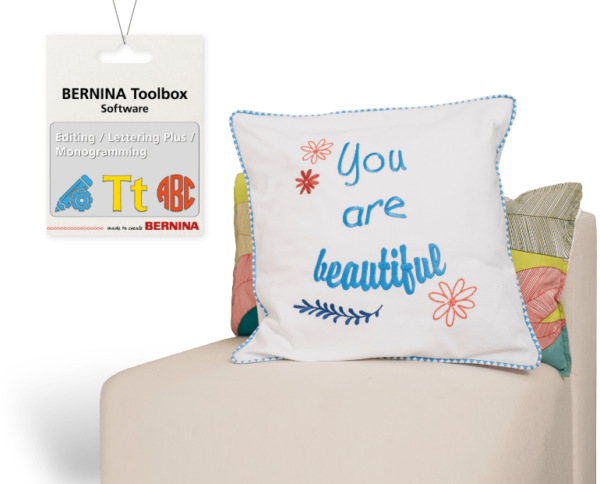
We are visual creatures and to see the design on your computers large screen ahead of time is both desired and invaluable. I was able to simply choose my machine, hoop size and immediately I could see the design in the hoop. Marvelous!
Marking Tools
Now that we have our template we need a way to transfer the marks to our material. These are my top three ways of marking, of course it will depend on the material. When in doubt, test the pen and removal on a small area.
- Heat removable (for natural fibers – avoid synthetic materials!)
- Wash away (natural or synthetic materials)
- Air erasable (good for materials you want to avoid washing or ironing)
Adhesives
Now that we have marked our materials we need to make sure the material and stabilizer will stay in place. Here are three methods of adhesives to keep a project in place:
- Tape
- Clear, i.e. Scotch tape
- Low adhesive, i.e. Painters Tape
- Wash away, i.e. Embroidery Wash Away Tape
- Spray, i.e. KK2000
- Fabric glue, i.e. Water Soluble Glue pen
How do you choose which adhesives? This will be determined by your project, materials and type of hooping. We will dive more into that as the Embroider-Along continues in future post. Just like your marking pens, test the adhesive on your materials to make sure not to ruin them.
Hooping techniques
We have covered the basics for placement and hooping. Once you are comfortable with those, it’s time to hoop your project. There are two ways to hoop:
- Hooping material and stabilizer together (with at least 1″ of material around the outside of the hoop)
- Hooping stabilizer only and floating the fabric on top (leaving 1″ of stabilizer around the outside of the hoop)
To determine which method to use, ask yourself these three questions:
- Is the project too small to hoop? i.e. Napkin corner, belt, ribbon
- Will the hoop leave marks on the material? i.e. Napped fabric like velvet
- Is the material to thick to hoop? i.e. vinyl, bathroom towel, leather
Hooping Material and Stabilizer
It’s important to have at least 1″ extra material/stabilizer around the outside of the hoop. This way the hoop has something to hold on to and the material/stabilizer combo will not shift while stitching.
Hooping Stabilizer only
There are circumstance where hooping the material is not an option. The material may not be large enough (a cocktail napkin). It could also be the material is too thick (a bathroom towel) or the hoop can leave marks on the material (vinyl). When you are only hooping the stabilizer and floating the material/project on the stabilizer here are some things to keep in mind:
- Hoop stabilizer with at least 1″ extra on the outside of the hoop
- Use an adhesive to to secure the material to the stabilizer so it will not shift while stitching
- Make sure the material moves comfortably with the movement of the machine
What is next?
The first four parts of my Embroider-Along have been packed with the basics of machine embroidery. The next four parts will be the “How to” portion and with the knowledge you now have you will be ready! Be sure to sign up for the newsletter and come back each week to see what’s new. You can also follow BERNINA on Instagram and Facebook to see the latest post!
Here is the Embroider-along schedule:
- Embroider-Along Part 1: Intro four most popular materials for machine embroidery
- Embroider-Along Part 2: Stabilizer and Materials
- Embroider-Along Part 3: Needles and Thread
- Embroider-Along Part 4: Placement and Hooping for Machine Embroidery
- Embroider-Along Part 5: How to Embroider on Knits
- Embroider-Along Part 6: How to Embroider on Woven Materials
- Embroider-Along Part 7: How to Embroider on Napped Fabrics
- Embroider-Along Part 8: How to Embroider on Sheer Materials
- Embroider-Along Part 9: How to Embroider on a Ladies T-shirt
- Embroider-Along Part 10: How to Embroider on a Pillow Case
- Embroider-Along Part 11: How to Embroider on Luxe Cuddle® Rose
- Embroider-Along Part 12: How to Embroider on a Pet Screen
Which is your favorite hoop? Which hoop do you want to add to your inventory? Let me know in the comments below and please ask any questions you might have about hoops. There is plenty of learning ahead of us. You have been asking excellent question so please continue to fill my inbox up with thoughts!!
Until next time I hope you have a creative day, bye-bye!
Sue
What you might also like
31 comments on “Embroider-Along Part 4: Placement and Hooping”
-
-
Me too!!! Love my Midi. Enjoy the Embroider-Along ~ Sue
-
-
I notice you don’t mention the Bernina Mega Hoop. Do you have any suggestions on the best way to get a good hooping with it? I like it because is is longer, good for borders or sashing, but I find it hard to get the tension even from top to bottom on the hoop.
-
I personally decided to get the Maxi hoop for my BERNINA 790 plus. When using a very large hoop it’s impor to keep in mind weight of materials. Hooping stabilizer and floating the materials on top might be a good choice. Also, ask your local BERNINA dealer for a few tips. In person they might be able to offer more suggestions. Enjoy the Embroider-Along ~ Sue
-
-
I use my large oval and jumbo hoop the most on my 880. I too have the hat hoop on my wish list.
I love the frixion pens for marking but haven’t found one to use on my dark fabric. Do you have a suggestion for one? I have found one that was too fat and can’t get as accurate marking as I’d like. Thanks for all the beneficial info.-
Friction pens are pretty cool. My favorite pens for dark materials is either a white pen (wash away) and the frixion pens also come in highlighter forms and there is a yellow one I love for dark materials. Ask your local shop. Enjoy the Embroider-Along ~ Sue
-
I asked at my local shop re markers for brocade. They suggested tailor’s chalk by Clover because it easily brushes away.
-
-
I use my 200 x 200mm quilters hoop the most – seems to fit most embroidery designs that I work on
-
Perfect. Thanks for following along. Sue
-
-
I am a “newbie” but just ordered the small hoop and the Bernina editing software (both on sale 🙂 ) with the gift certificates that I requested and received for Christmas. Love your series and am attempting to memorize every word!
-
Awesome!! Congrats on the gifts too. Bookmark part 1 and you can always come back and keepnlearnjng. Enjoy the Embroider-Along ~ Sue
-
-
What is the solution when the stabilizer is 12″ wide and the hoop is wider than that? That was the widest stabilizer I found so I tried fusing a lengthwise and a crosswise piece. What a puckering disaster!
I was hoping for more on avoiding puckering. Any more on this is the future? Thanks! I am enjoying the advice.
-
Oh excellent questions. My favorite stabilizers happen to be the OESD but I’d ask your shop if they sell stabilizer on the bolt (20-22” wide). Enjoy the Embroider-Along ~ Sue
-
-
Nicely done. I too have the Mega and find that it is loose-ie Goose-ie. I think I want the Midi and Maxi for my 790+. My wish list has grown.
-
That’s what happens. We learn and grow our wish list!! I find the best thing to do is keep the Hoop as small as possible. Enjoy the Embroider-Along ~ Sue
-
-
You go so as far as hooping fabric or stabilizer but I do not see any mention of placement?? Am I missing something??
-
Placement has a lot to do with marking the materials and using the templates. As the series continues we will cover more about placement on specific projects. Keep following along. So much to cover. Enjoy the Embroider-Along ~ Sue
-
-
I like to make quilts. My favorite and most frequently used hoop is the jumbo hoop because I can move the machine to the center of the desired embroidered/quilted design. It makes hooping my projects significantly easier 🙂
-
Love to hear this!! Quilting with the machines is amazing. Enjoy the Embroider-Along ~ Sue
-
-
Is there a way to save these posts? it’s hard to find them when I want to go back and look at something again. I’m really new to using my embroidery function on my 790
-
Hi Pat,
Great question. Because this series has been so popular, BERNINA went ahead and created a special link. Here you go. Follow this link and bookmark the page: https://weallsew.com/category/projects/embroider-along/Enjoy the Embroider-Along ~ Sue
-
-
Im so excited that I have found out about your classes and I have learned so much so far. I own a babylock 10 needle so I hope its ok to join in on your class.
-
We are happy you found it too!! Yes of course, the more the merrier. This is for everyone!! There will be some specifics to BERNINA of course but for the most part this is excellent information for all embroiderers!
here is a link for the entire series: https://weallsew.com/category/projects/embroider-along/
Enjoy Sue
-
-
I love to embroider on most anything that doesn’t move too fast! ?
-
Oh cute, me too 😉
Sue
-
-
I have an old Artista 630. I hope to put monograms on cotton napkins with this information .
-
My I ask you the sequence for edge to edge in the hoop? I have a 780 and recently took an edge to edge class specifically trying the spider web. Even after trying for hours and writing the steps the instructor took me through I STILL can’t line up the design. These are the steps she had me write down after design finishes.
1. Edit
2. Check
3. Bullseye
4. Needle down center
5. Line up center lines on quilt to match hoop
6. Up needle
7. Fine tune needle placement
8. Needle up
9. X out
10. Needle…
11. Green flash and start
I know this isn’t right. I’ve written it wrong and I’m two hours away from this shop and honestly I feel like I’m an unteachable moron. I don’t want to ask her again. I’ve searched you tube I’ve searched everywhere. Can you offer assistance? Any help is appreciated. Thank you -
Good reminder to mark material (clearly) before hooping! I just embroidered a t-shirt with a design that is an inch or two left of center (oops!). I did mark a few lines in chalk, but they weren’t easy to see when trying to line everything up. I’ve ordered an air erasable pen for next time 😉
-
Wonderful, you will have to let me know how you like your air erasable marker
-
-
Can you use a magnetic hoop frame on Bernina 770qe?
-
I personally don’t have one so I can’t say, but maybe someone from BERNINA can comment on this.
-
Leave a Reply
You must be logged in to post a comment.
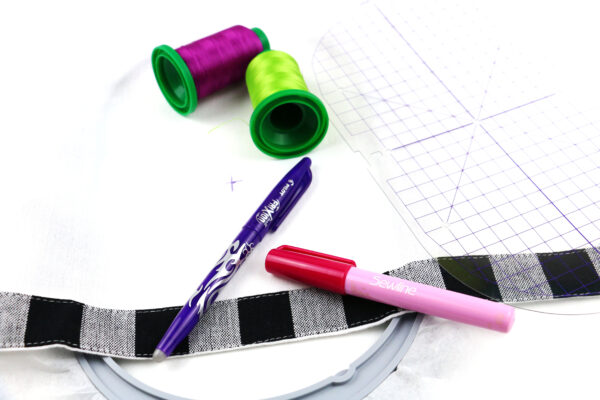
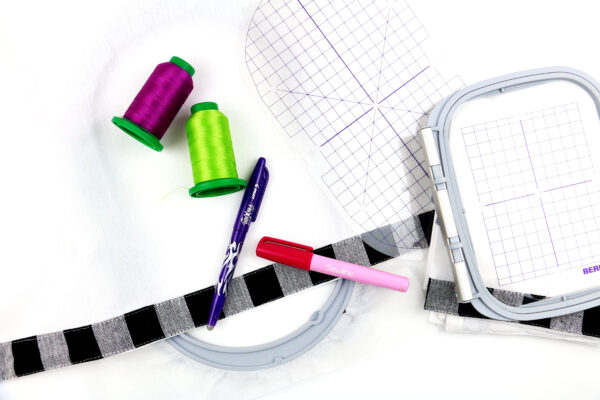
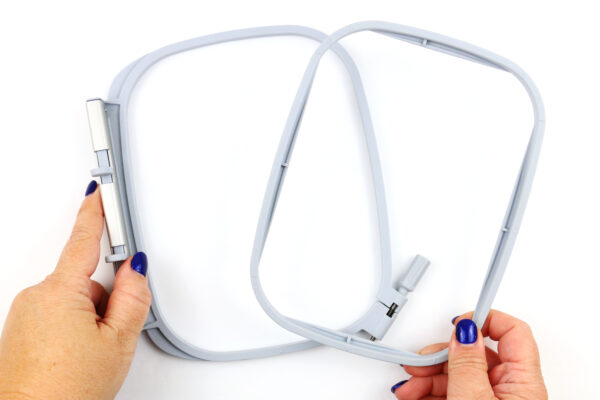
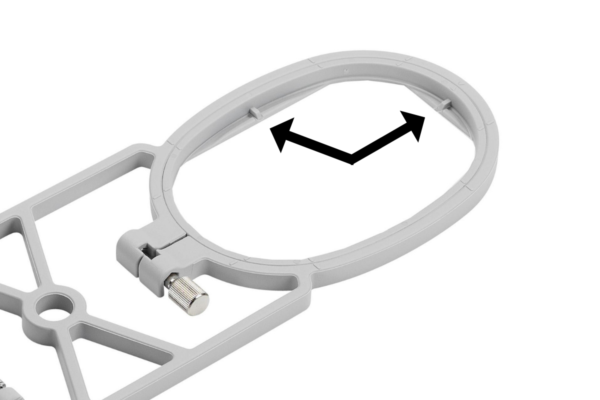
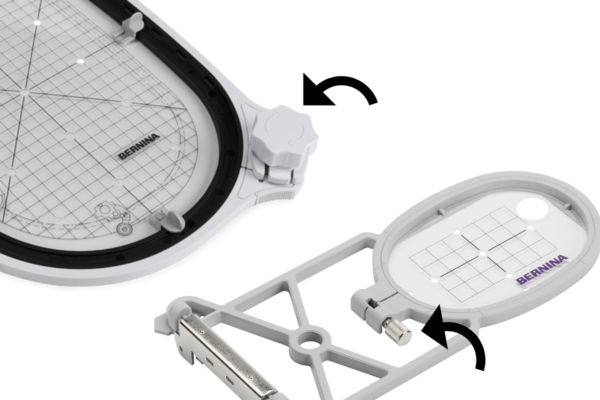
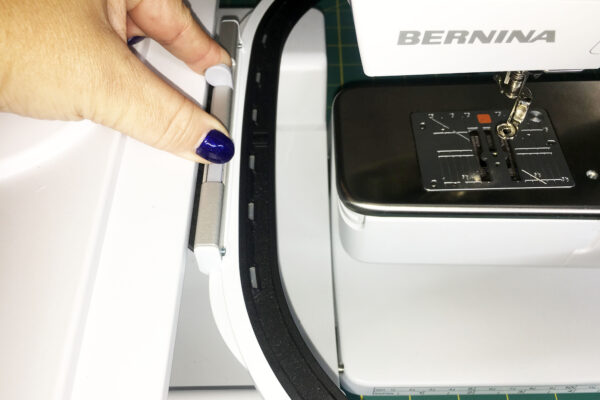
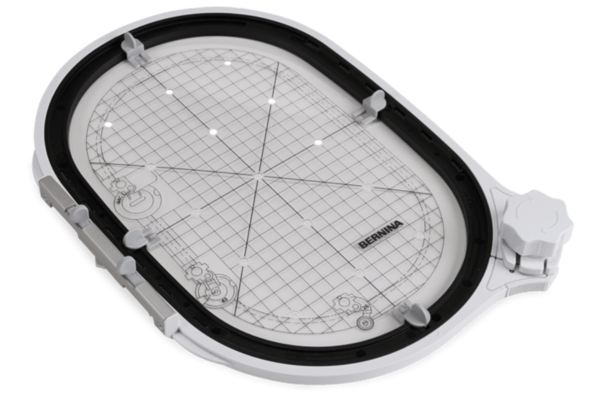
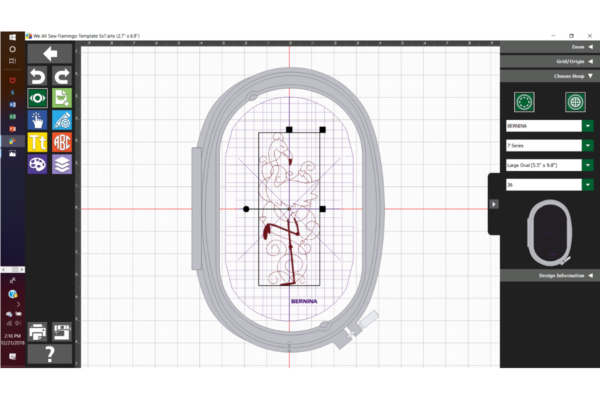
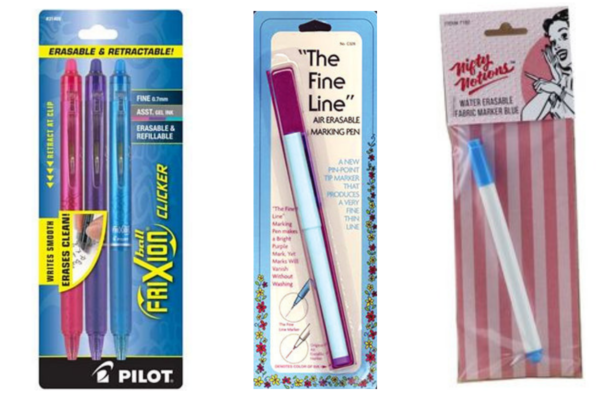
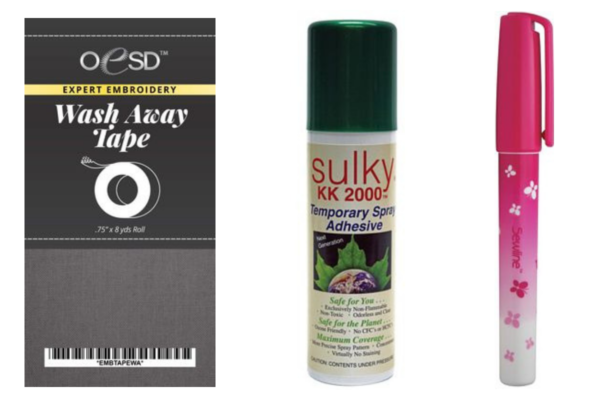
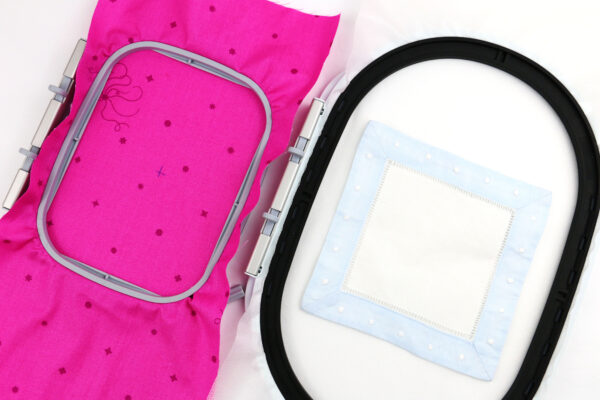
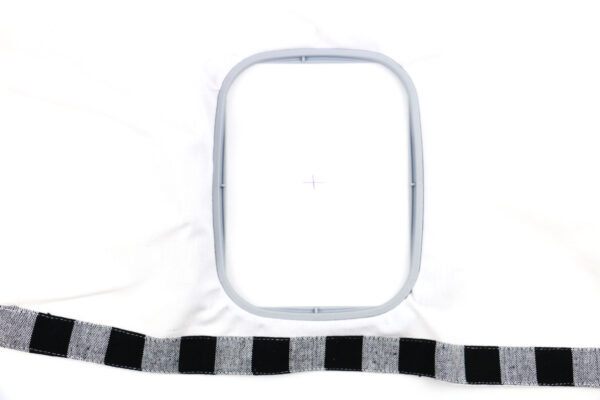
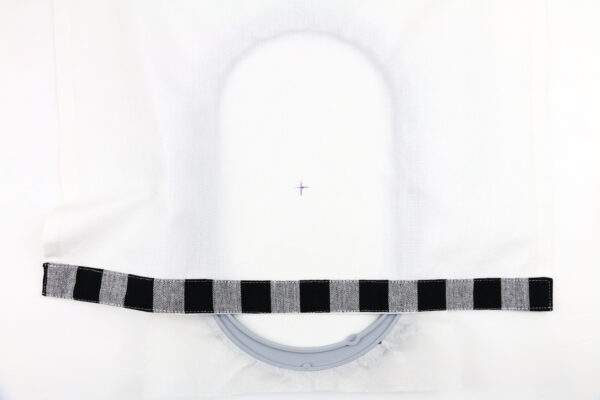
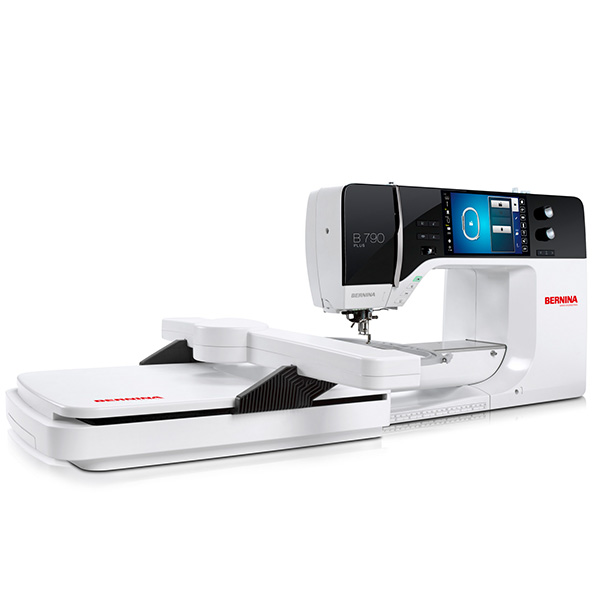
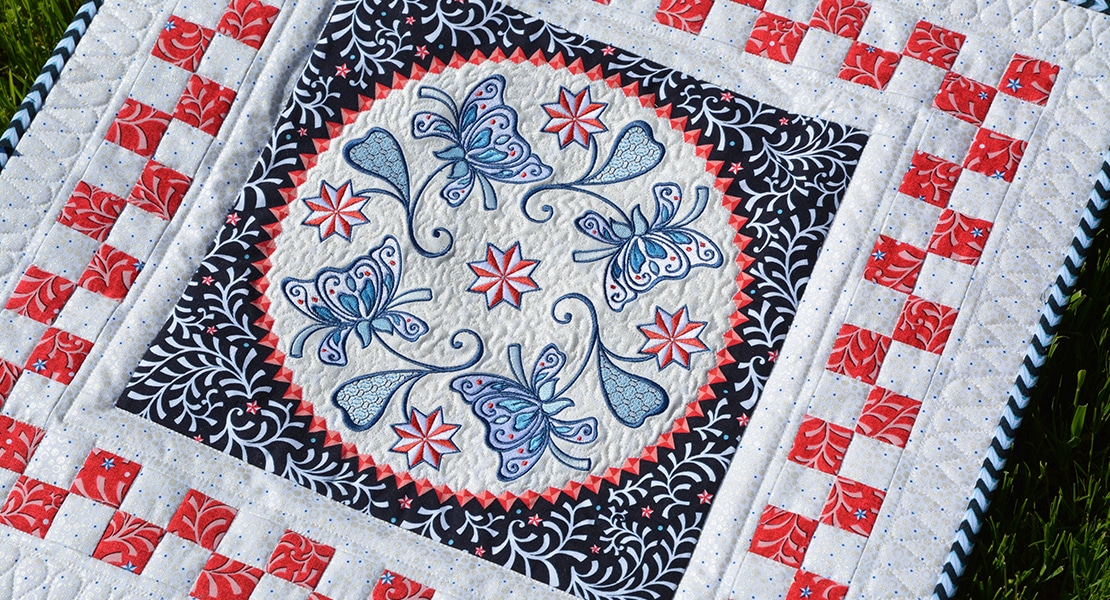
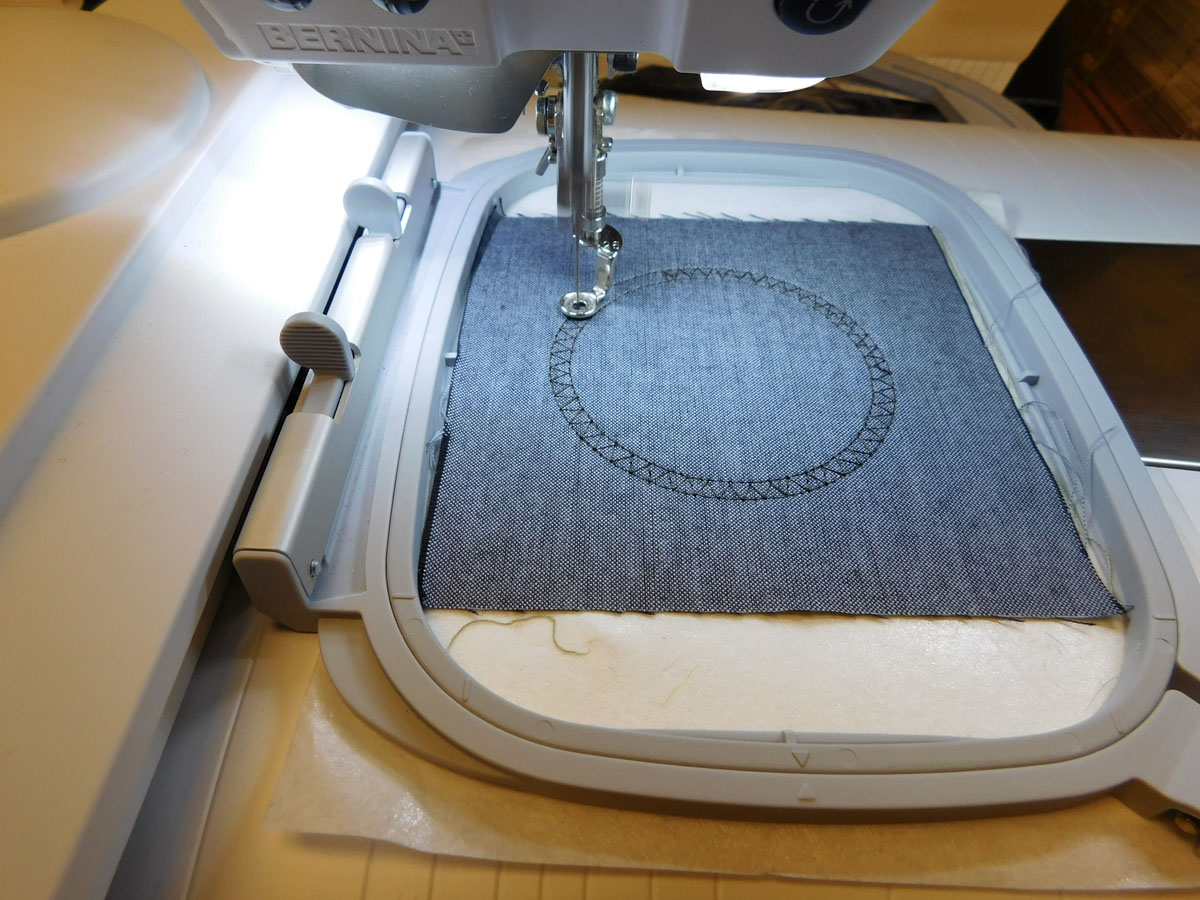
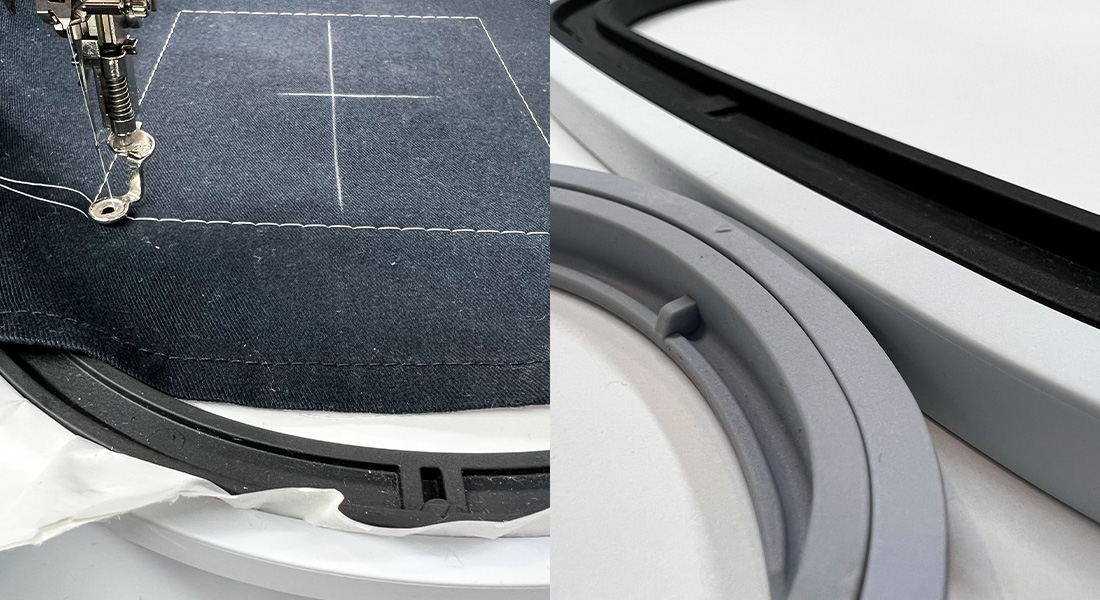
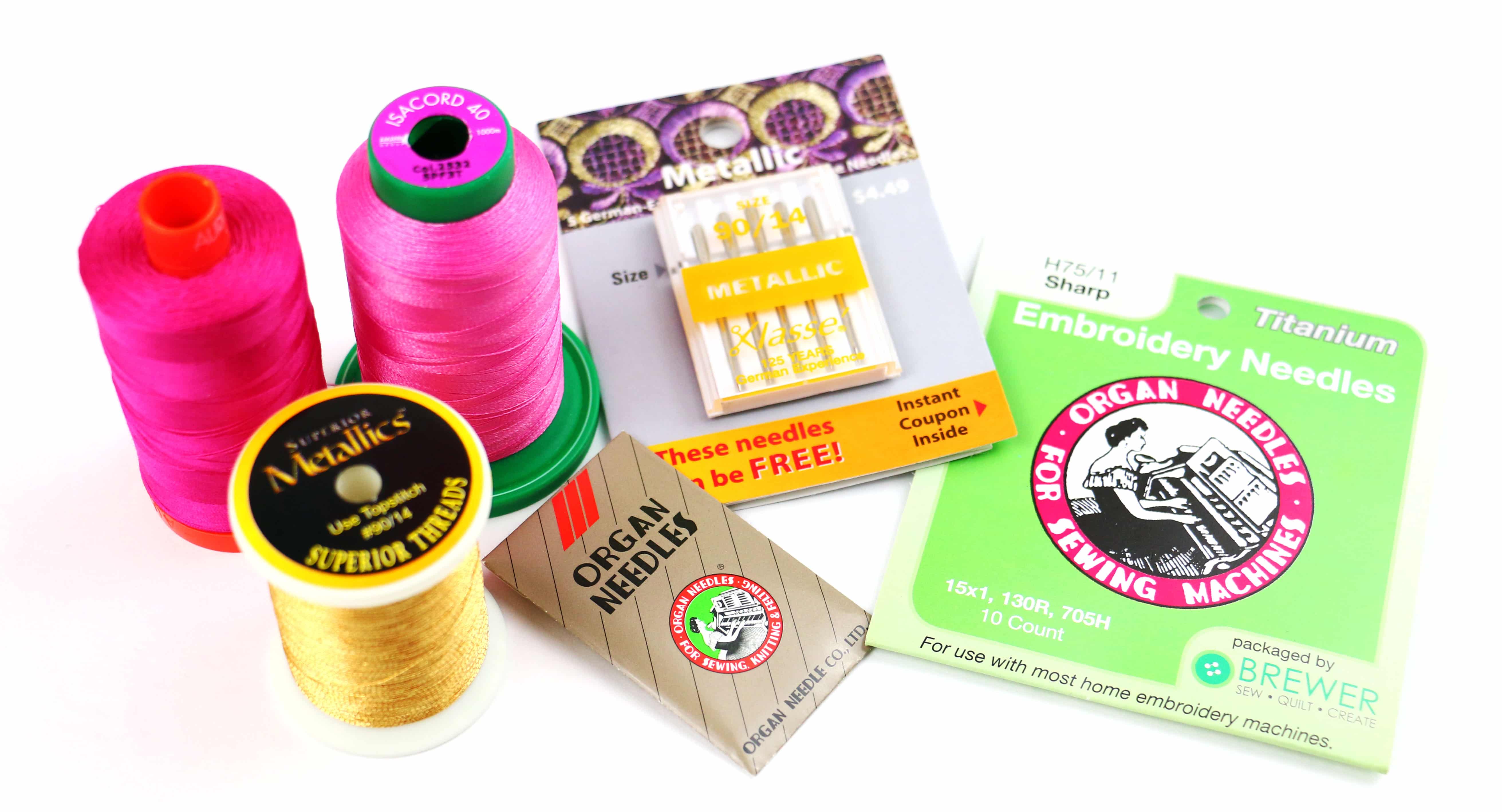
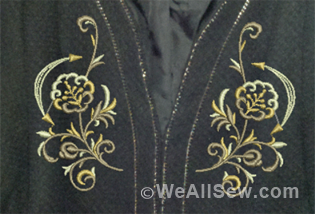
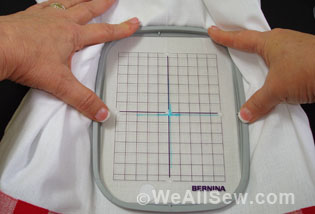
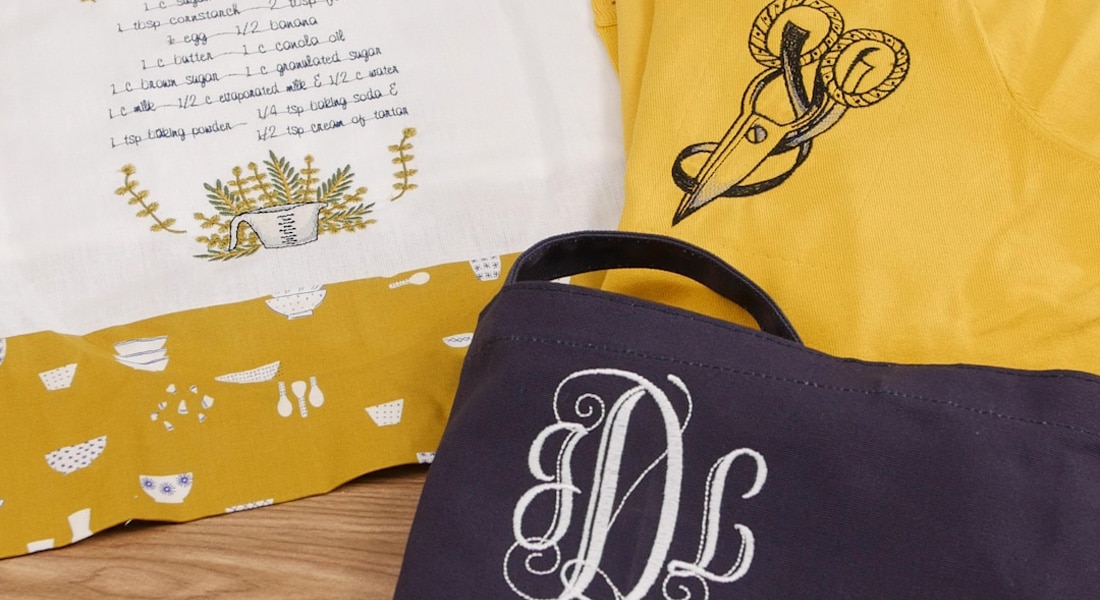
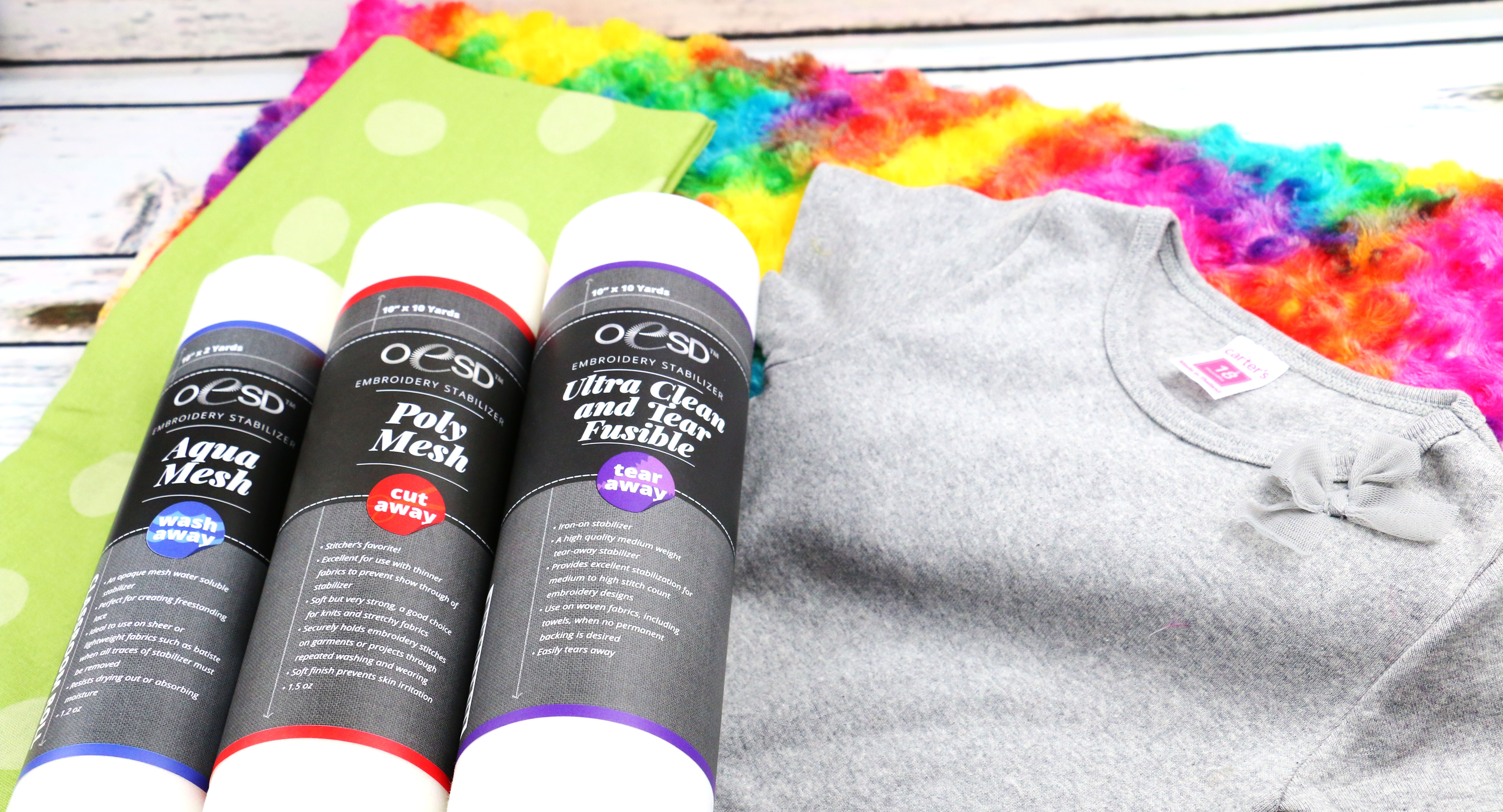
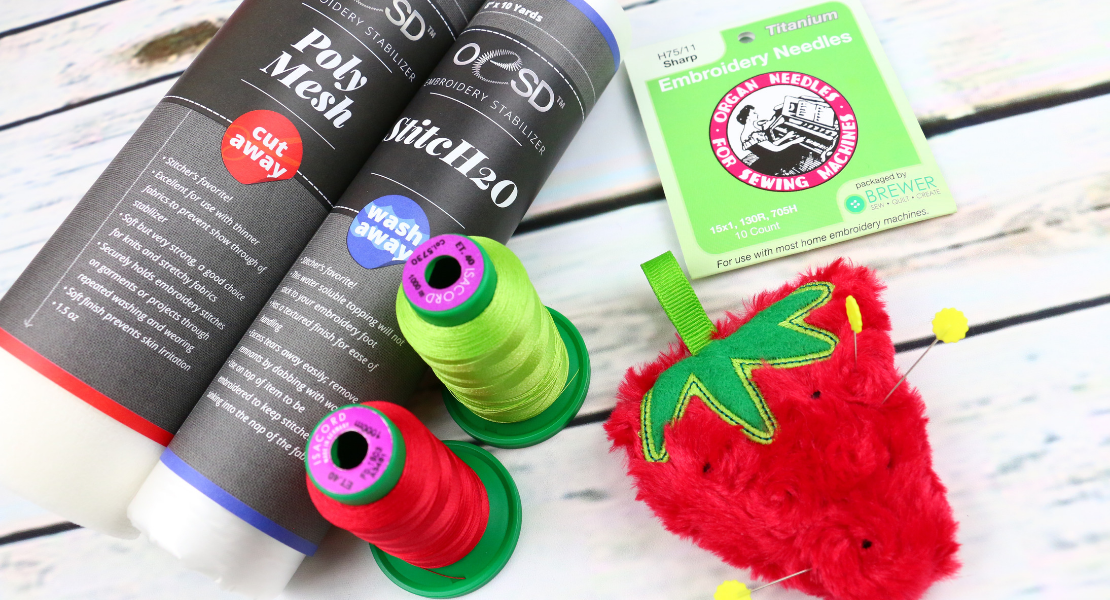
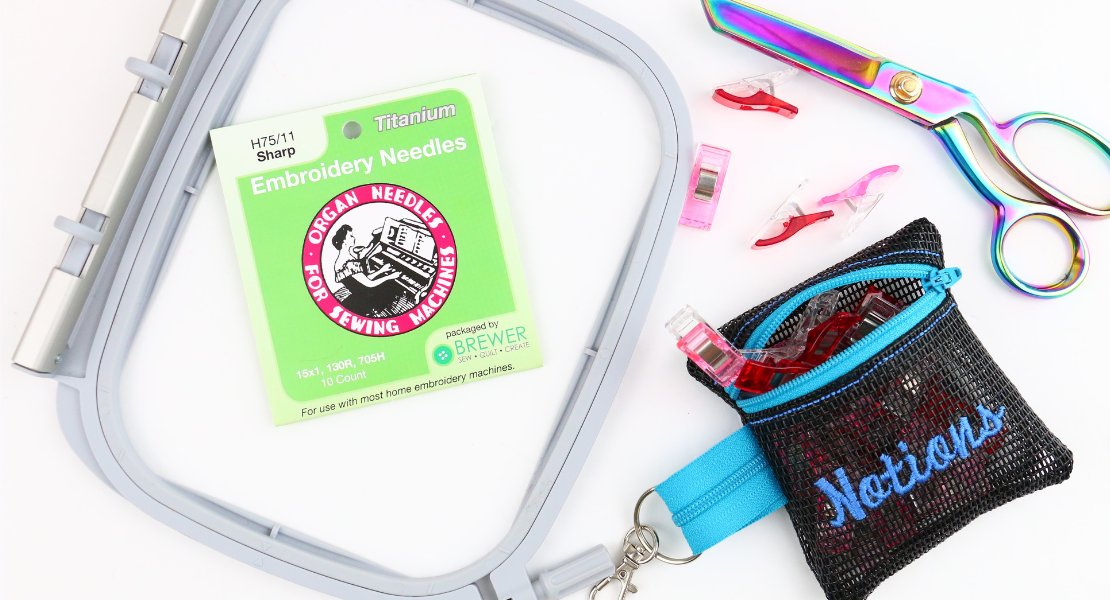
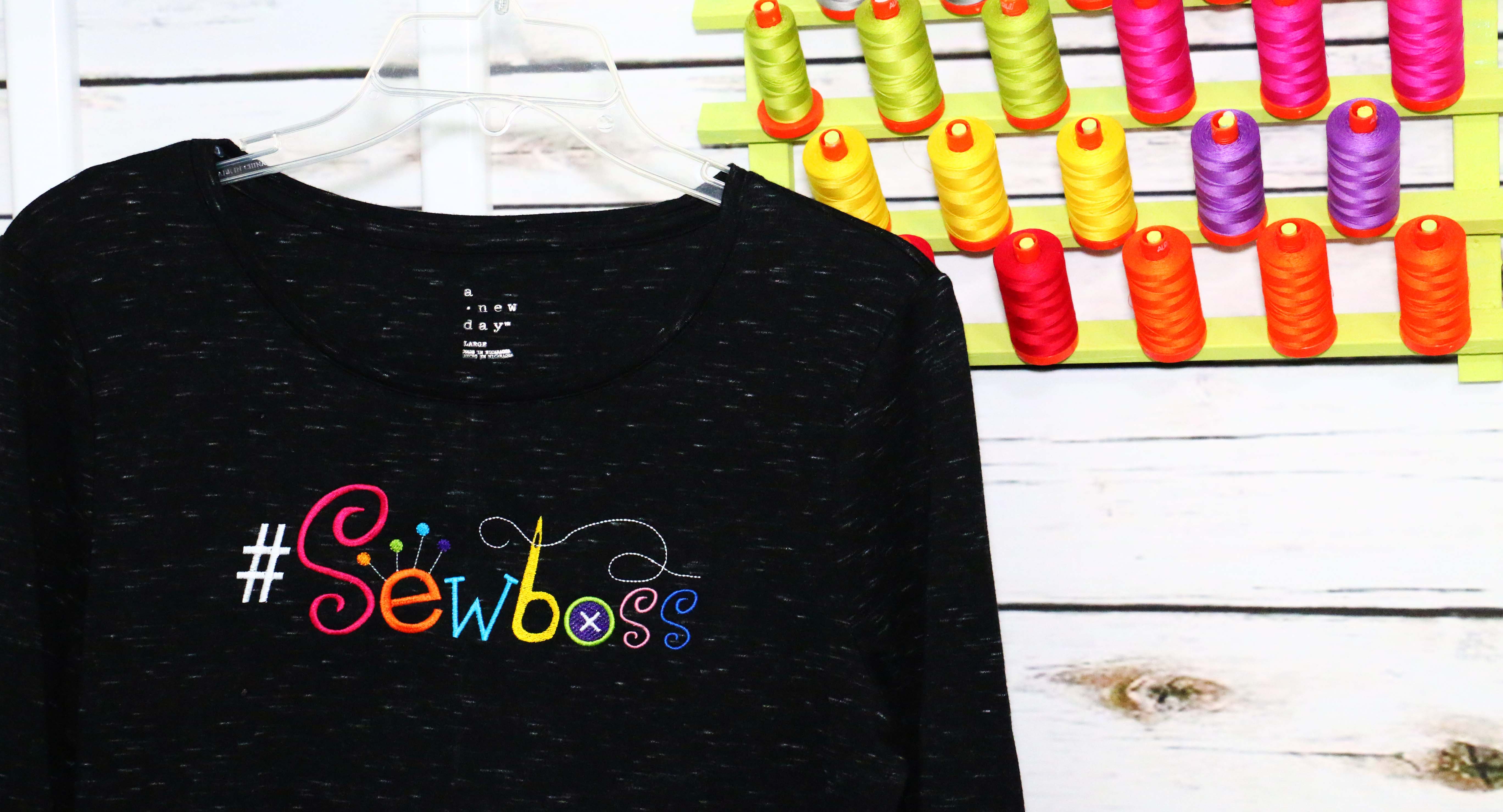
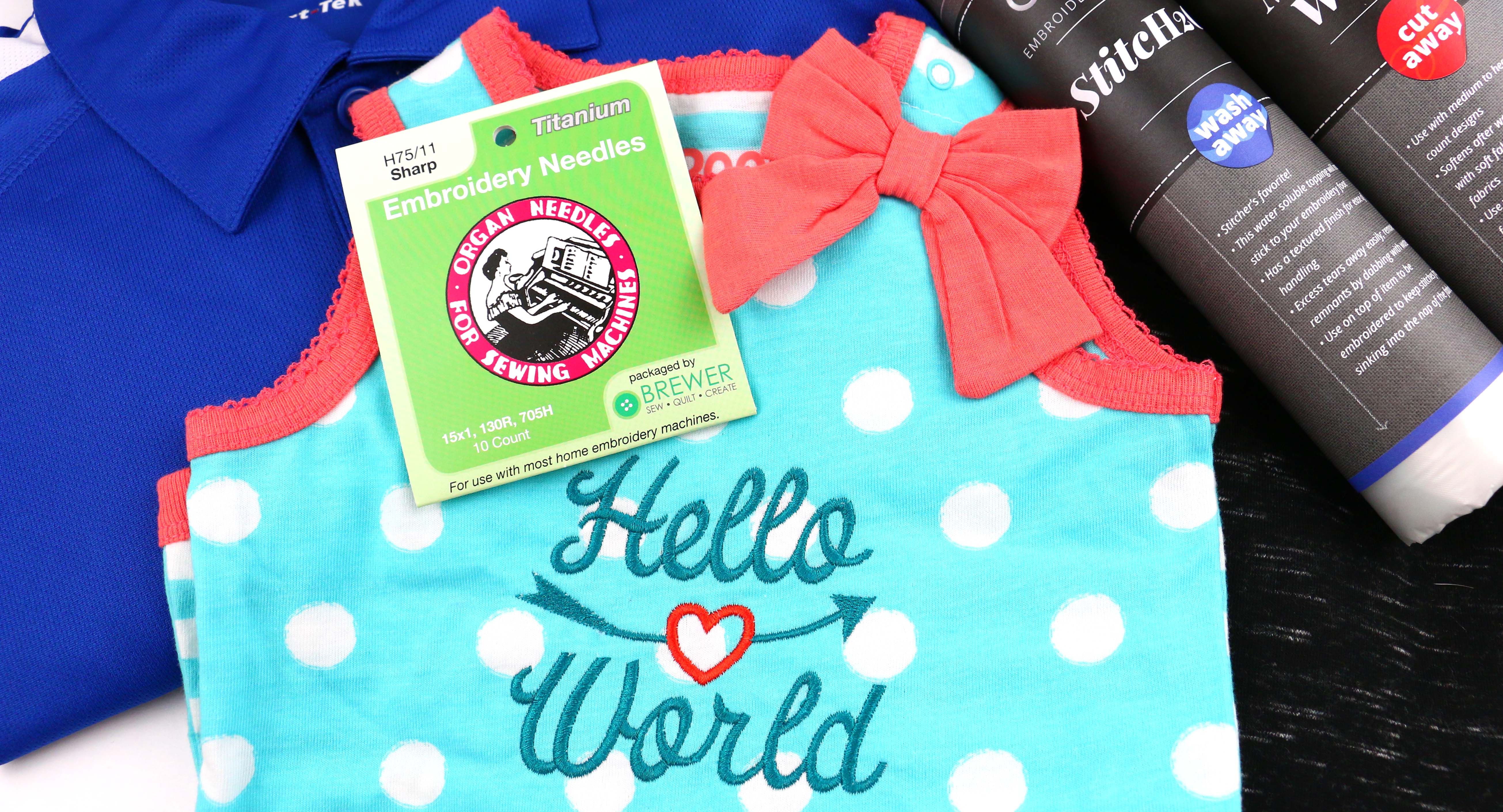
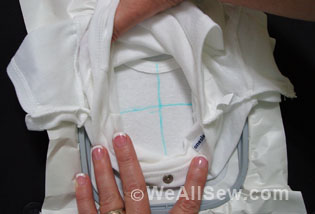
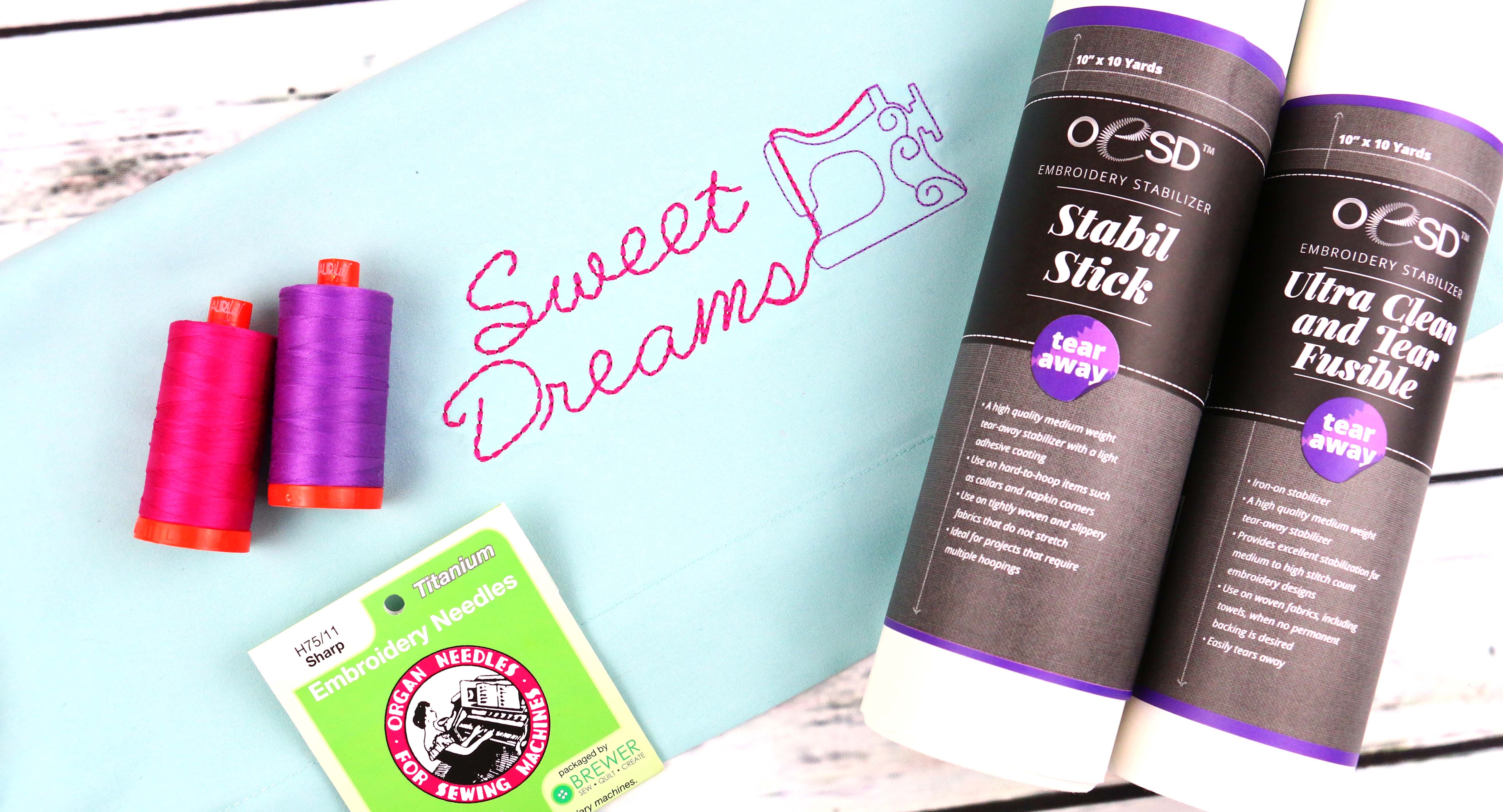
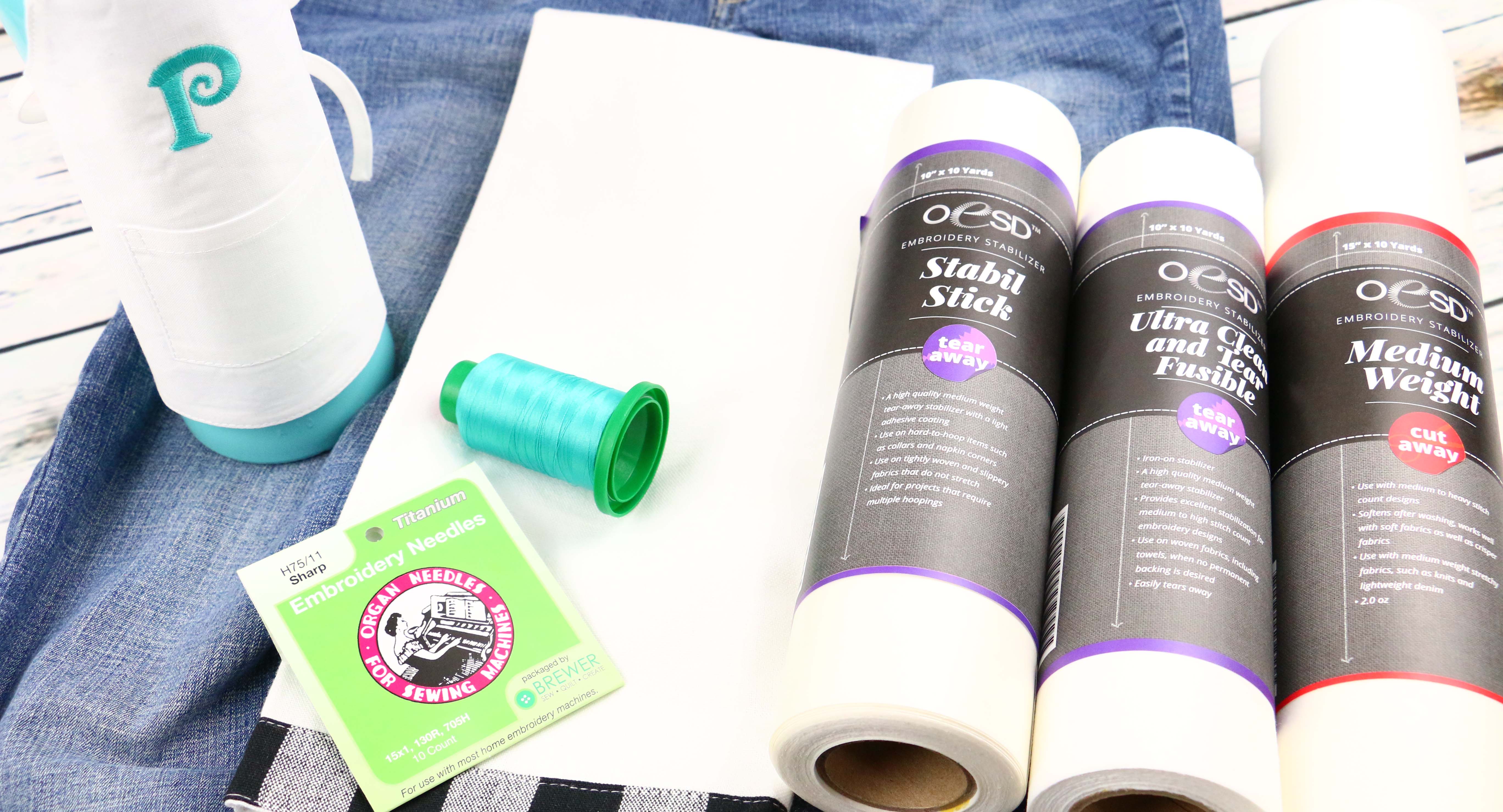
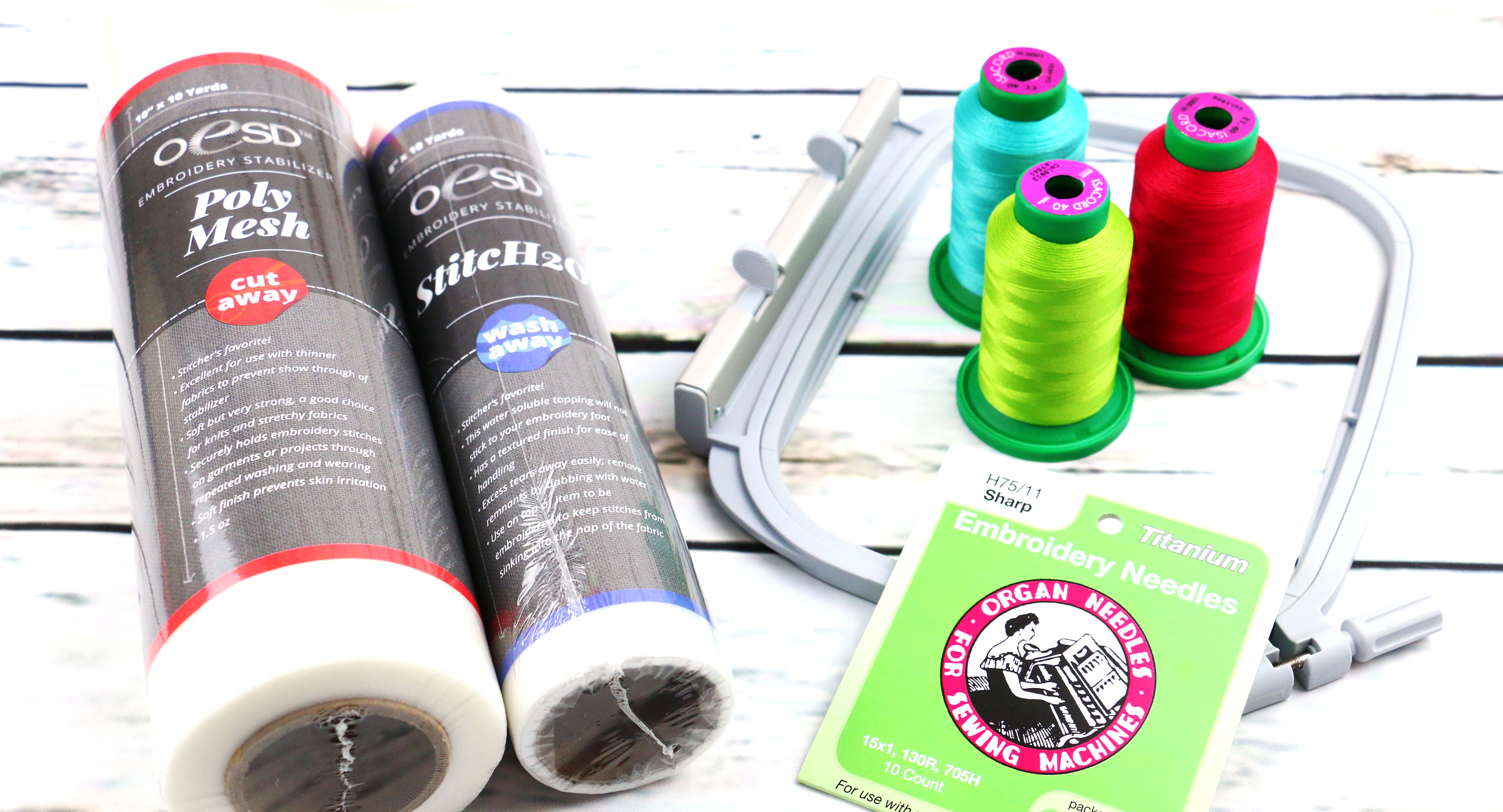
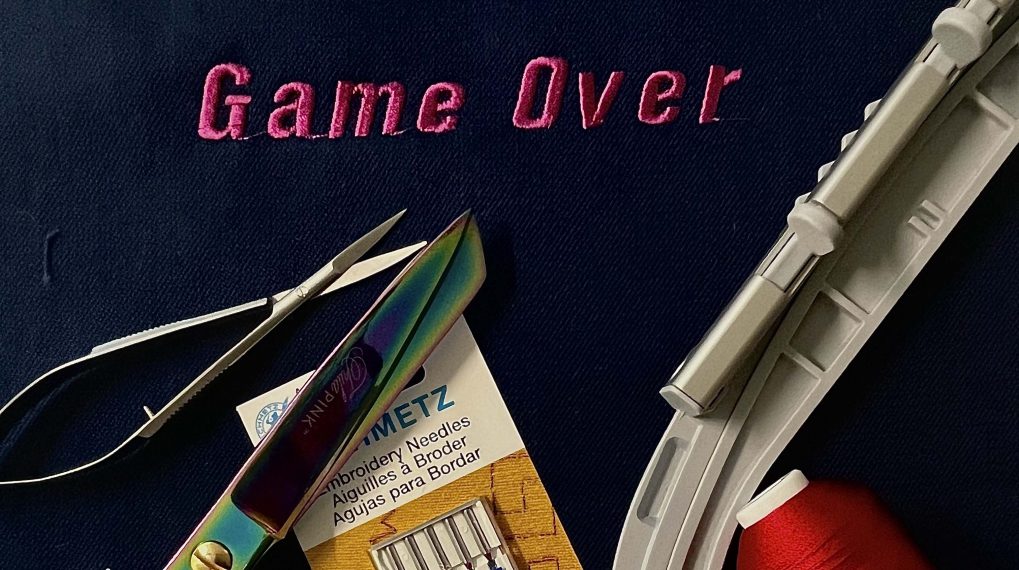
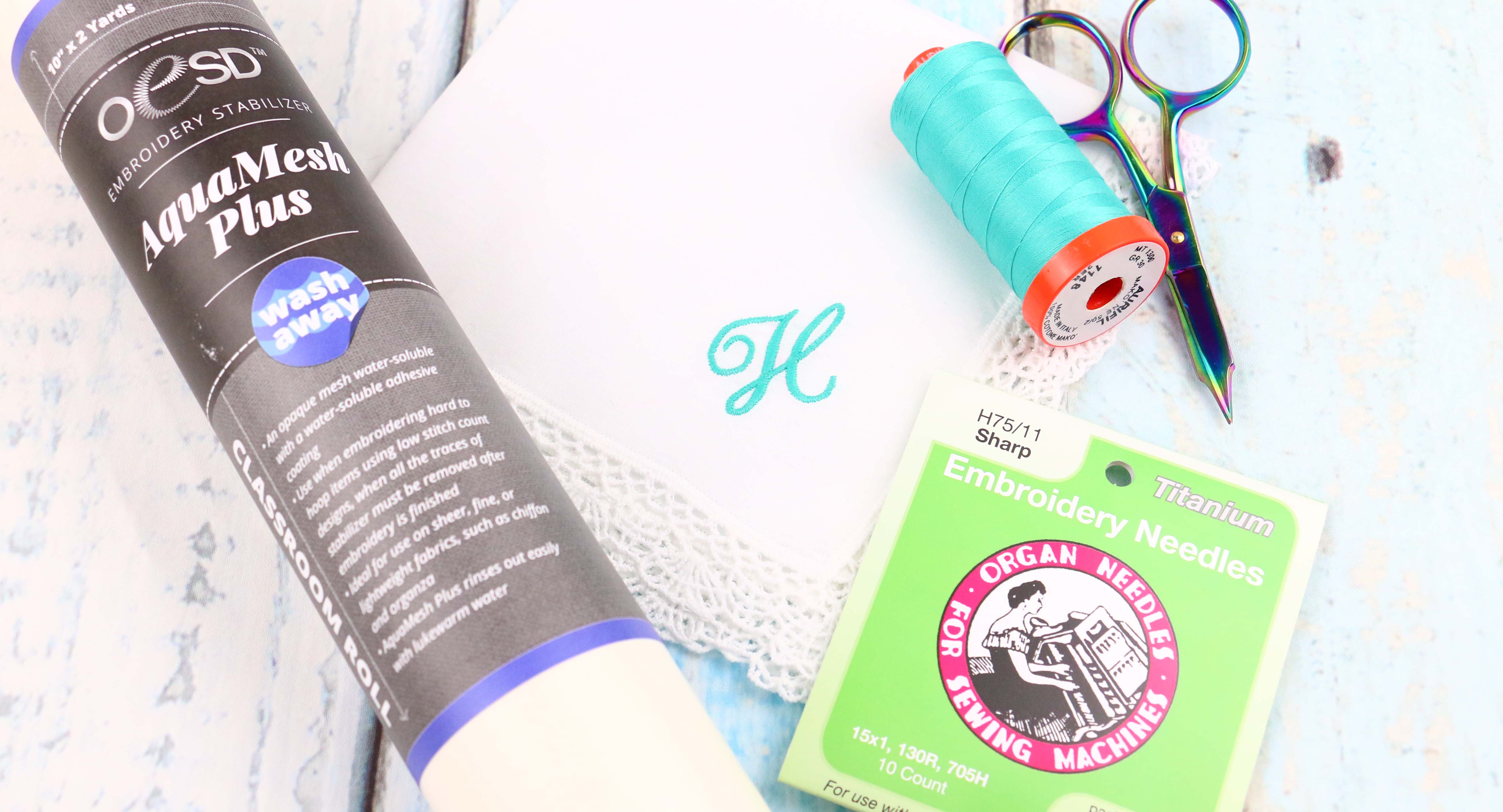
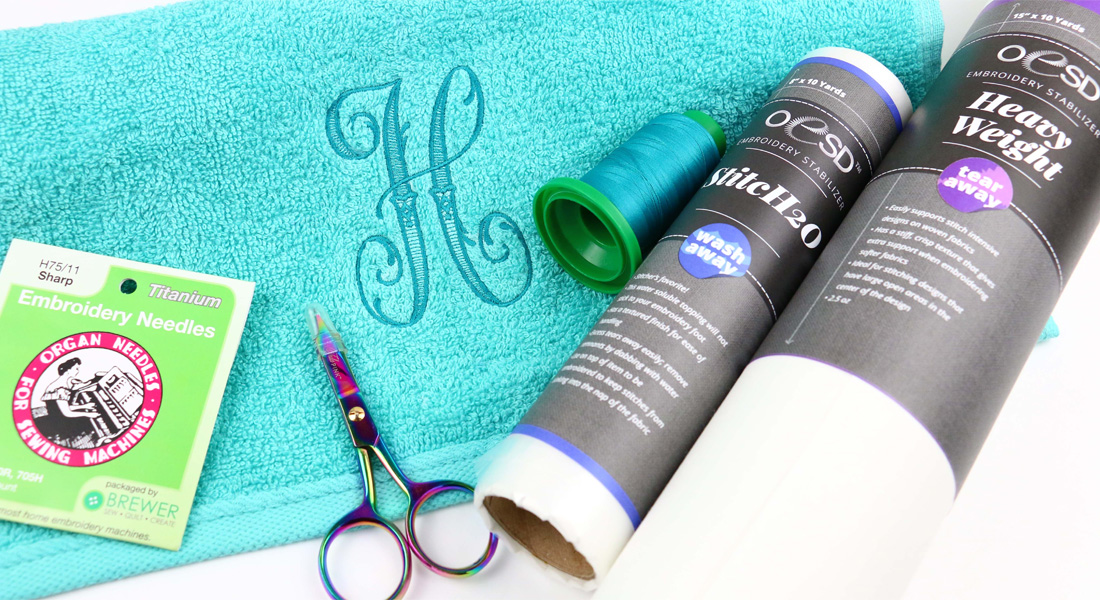
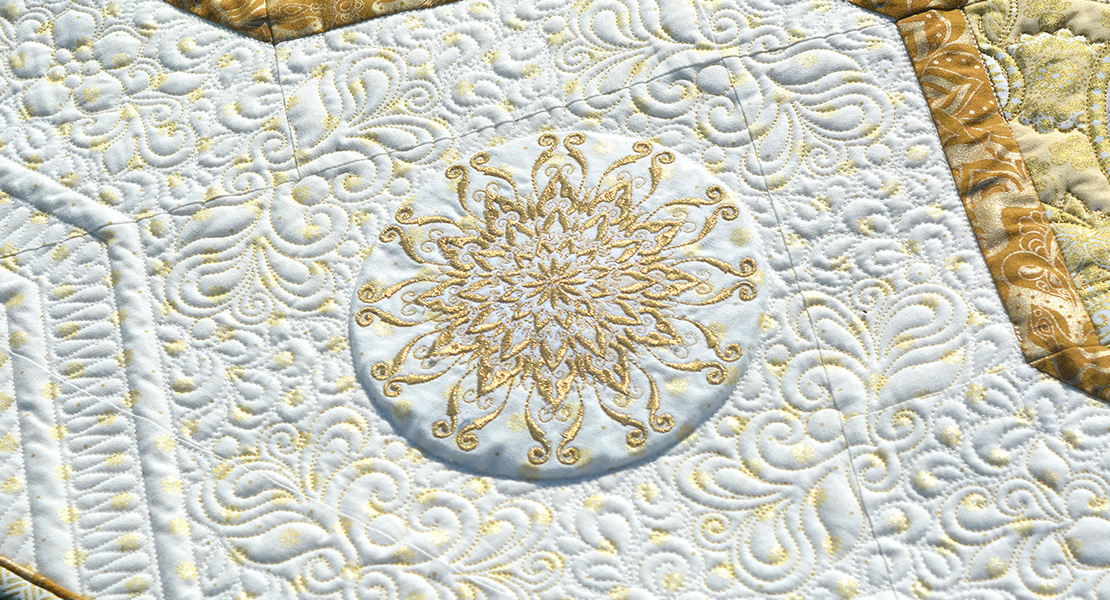
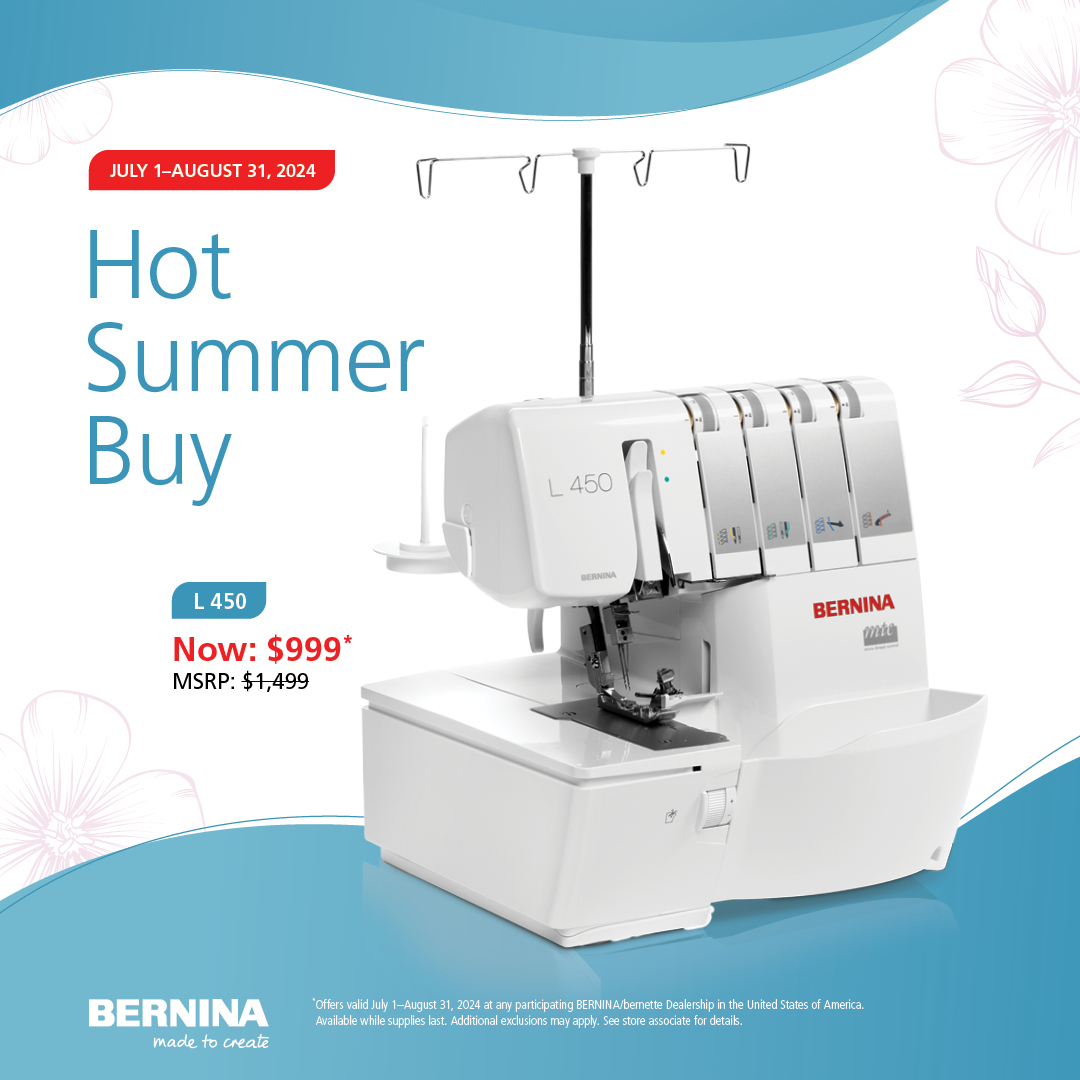
I love the midi and maxi hoops for my 790+ — mostly because of the easy of tightening/releasing the fabric and stabilizer in the hoop.